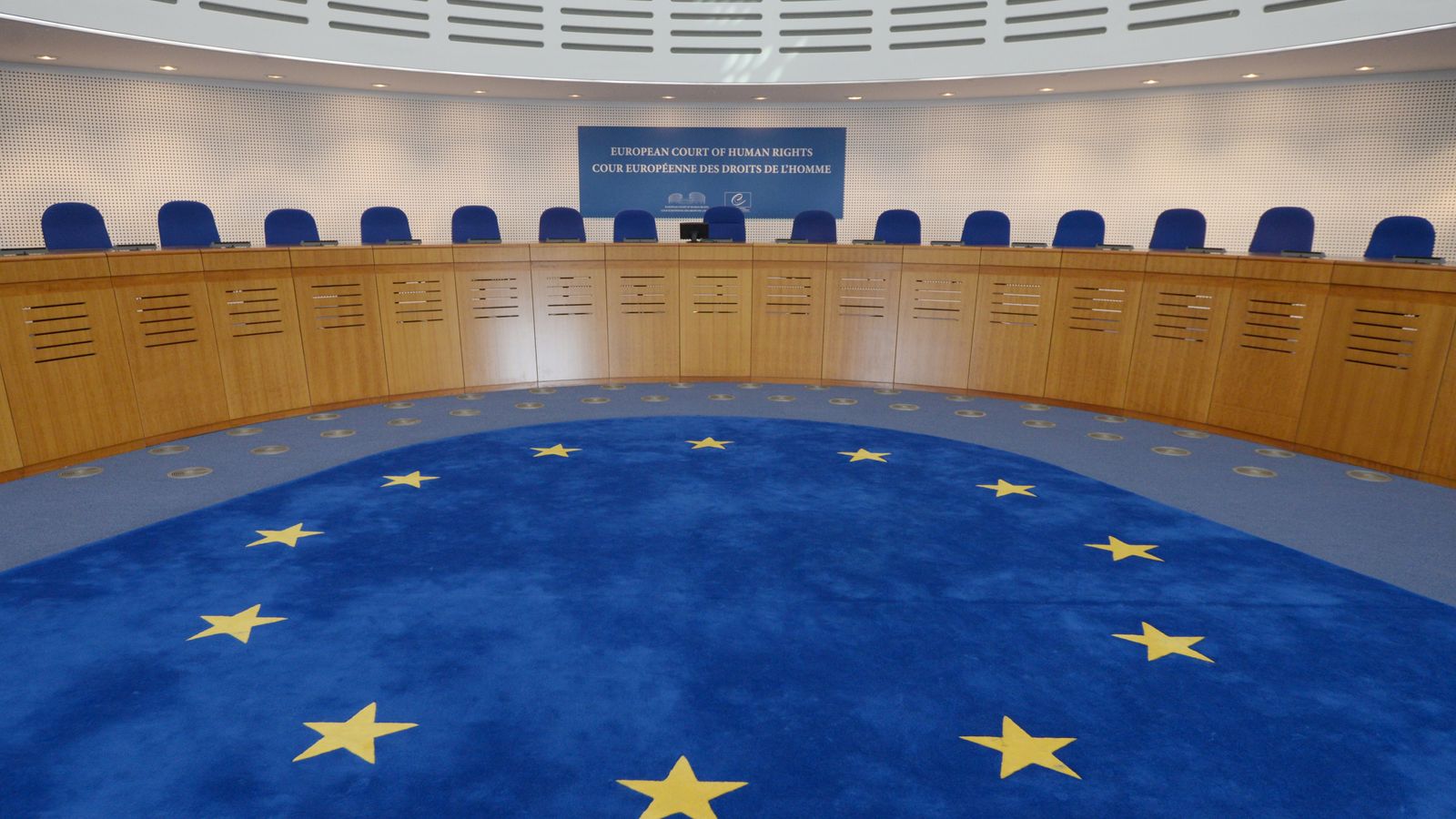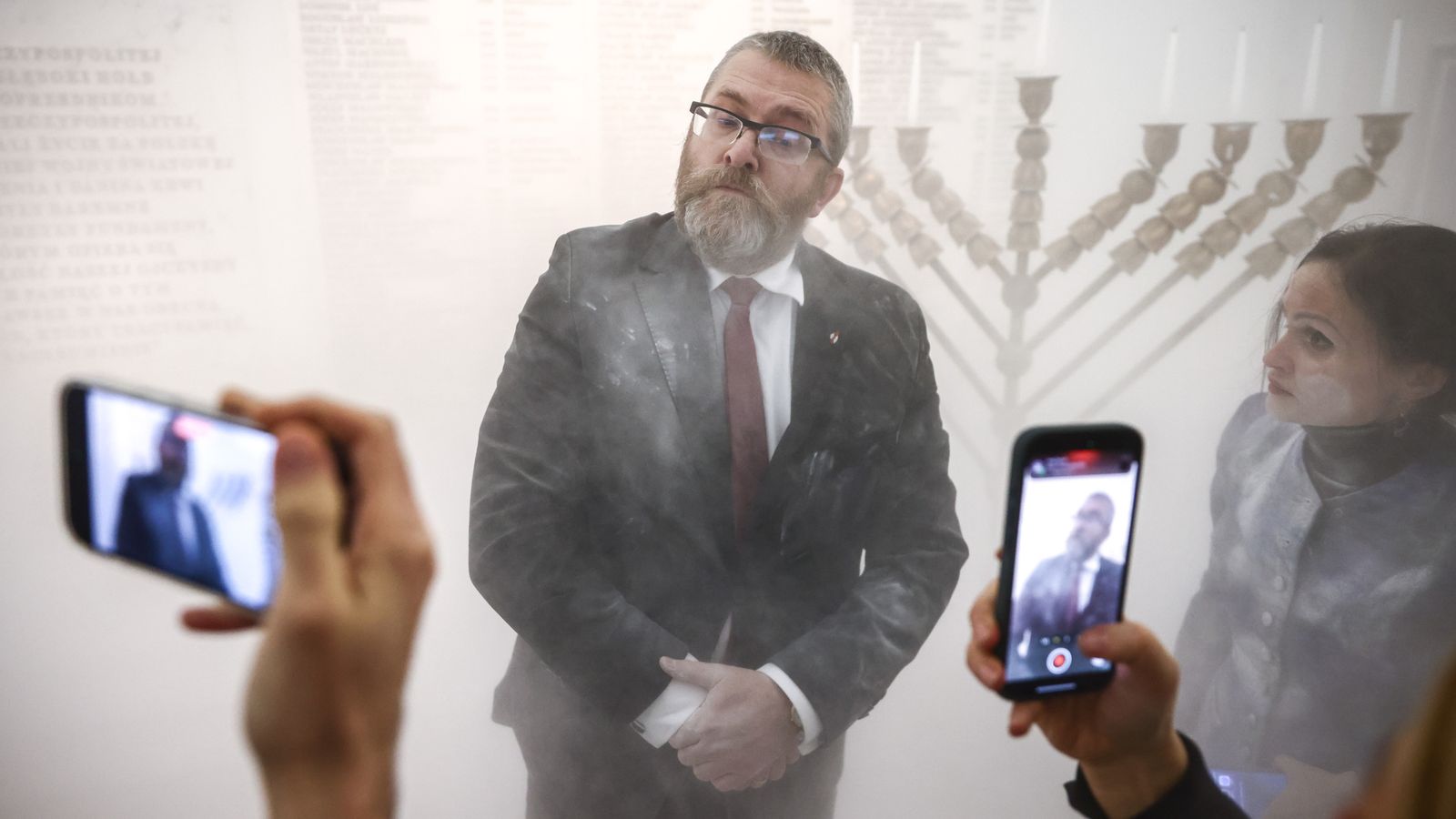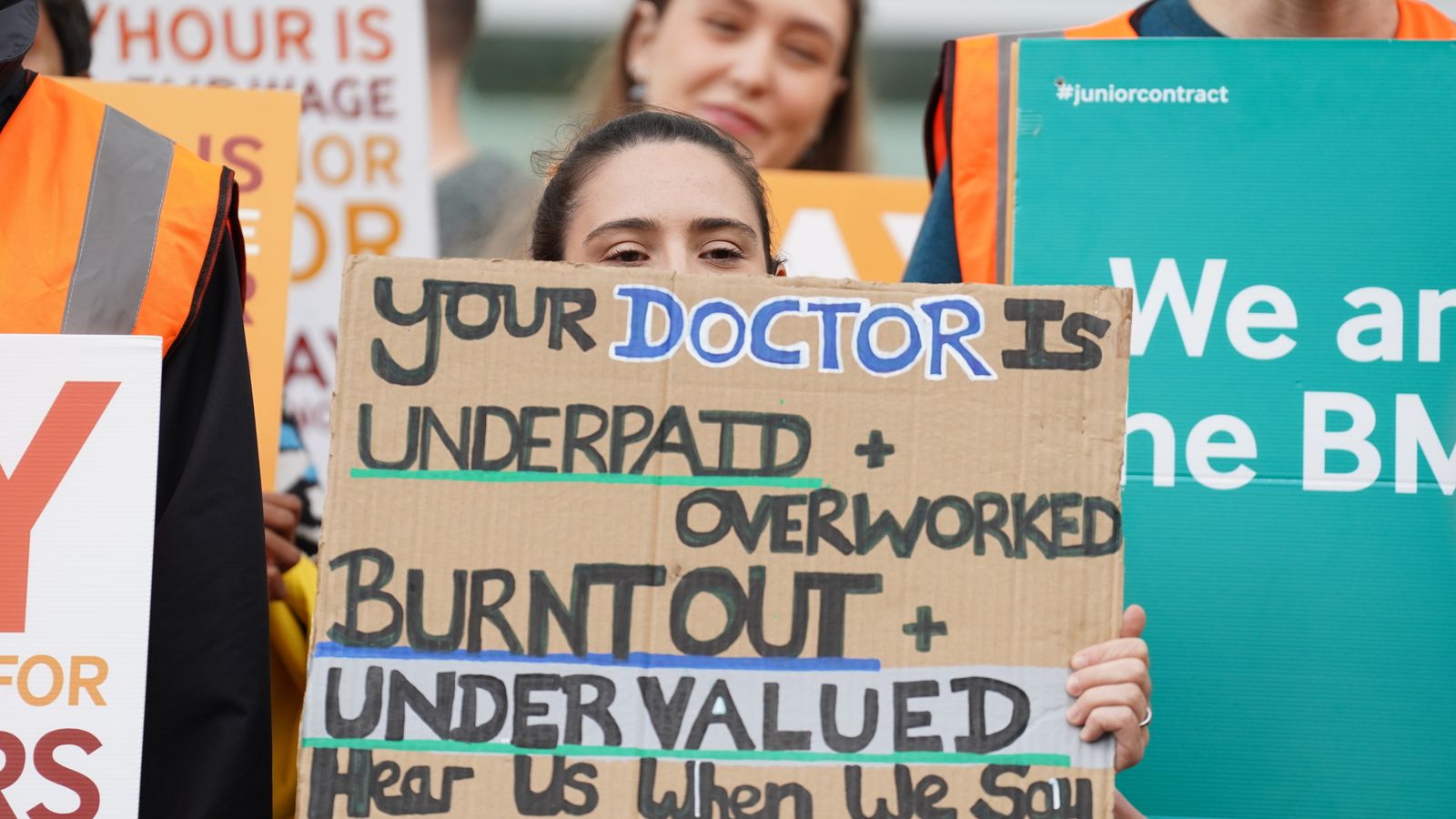The European Court of Human Rights is back in focus again after its last-minute ruling prevented the departure of a plane carrying asylum seekers to Rwanda.
Some Conservative MPs have expressed fury that the court, which is based in the French city of Strasbourg, could ground a UK flight, especially after Brexit.
But the court is not a European Union institution – it was set up decades earlier and the UK was one of the founding members.
Sky News looks at how the ECHR works and why its decisions override those made in British courts.
Origins
The ECHR came into existence in the aftermath of the Second World War.
Even before the war had ended, in 1943, Winston Churchill had proposed a Council of Europe to ensure that the continent would never again see the sort of injustices that allowed the Nazis to take over Germany and then impose fascism across the continent.
After the allied victory, the UK and 10 nations that had been involved in the war, plus Ireland, got together in 1949 to form the Council of Europe, a group tasked with upholding human rights, democracy and the rule of law in Europe.
One of its first tasks was to create a document that set out the rights that people should enjoy in this new Europe – the European Convention of Human Rights.
But it needed to be upheld, so out of that came the European Court of Human Rights, a judicial body that would impose judgments on whether countries had breached a person’s rights.
It was and is central to the way the Council of Europe was set up that member countries have to abide by the convention, and hence the rulings of the court.
The Council of Europe has since grown and now contains 46 states, including many not in the European Union.
The only European countries not in the council – and therefore not subject to the rulings of the ECHR – are Russia, Belarus and the Vatican City, although the Holy See as the Vatican is also known is an “observer state”, which means it can be invited to take part in discussions.
Russia was a member for 26 years but was ejected in March after the invasion of Ukraine.
What’s in the convention?
Along with the breaches of human rights that happened during the Second World War, the brutality meted out in the communist east also played a part in shaping the convention, especially as more members joined the Council of Europe.
The convention was based on the Universal Declaration of Human Rights, which had been adopted by the nascent United Nations in 1948.
At its heart was securing the principle of democracy, with all the rights it enshrined – many from British and French traditions – aimed at ensuring a democratic state could function effectively.
It consists of 18 articles and 15 protocols that provide protection for people against the unfair and unjust actions of the state, or potentially other individuals through the state.
The articles are the fundamental rights that member states must provide. The protocols were added later, some of which became compulsory and others encouraged.
The articles include the right to: life, liberty, security, fair trial, privacy, free expression, assembly and protection from torture and servitude.
Among the protocols are: protection for property; the right to education; the right to take part in free, secret elections; the right to move freely; the right not to be discriminated against; and the restriction and abolition of the death penalty.
The UK has not ratified protocol 4, which provides the right to move freely and to leave a country, prohibits the expulsion of nationals, provides the right to enter a country and prohibits the collective expulsion of foreigners. This is because of concerns it affects British nationality law regarding the rights of British Nationals (Overseas) to live in the UK.
How does the court operate?
Sitting in Strasbourg, the court has 46 judges – one for each of the nations in the Council of Europe – each of whom serves for a nine-year term.
The British judge is Tim Eicke, a German-born QC and expert on international human rights law.
Cases registered are assigned to a figure called a judge rapporteur, who decides whether cases are admissible, depending on whether they abide by a list of criteria.
Generally, most cases will be heard by a chamber of seven judges, unless the case raises serious questions of interpretation of the ECHR, which means it will be heard by the Grand Chamber of 17 judges.
Once a judgment has been made, it is passed to a group called the Committee of Ministers, made up of the foreign ministers of each member state, who are expected to implement the decision.
The court has no power to force a change in laws set by a country’s parliament – the Committee of Ministers oversees the process by which member states change their laws, but it cannot be enforced.
Consequently, there have been numerous instances of countries not abiding by decisions, or the legal implications of decisions.
In 2015, while still a member of the Council of Europe, Russia adopted a law allowing it to overrule judgments from the ECHR.
Other countries’ courts have at times queried the applicability of ECHR decisions in national settings.
Issues with the court
Over the years, the UK government has had many run-ins with the court, as people have tested the application of British law and how it interacts with the convention.
It has led to British law being reshaped, with judgments being integrated into case law in the respective parts of the UK.
British politicians have regularly been critical of ECHR decisions but England and the devolved nations generally abide by them.
One the government refused to implement, however, was the rights of prisoners to vote, which in 2005 the court said should apply to the UK. A form of compromise was reached in 2017, when those on out temporary licence were provided with voting rights.
Another issue has been that, with the expansion of the Council of Europe, the number of cases registered with the court has grown exponentially.
As of 31 December 2021, there were 70,150 live applications pending to be allocated, but 24% of those were from Russia.
Since the court was formed, it has delivered judgments on 24,511 cases (up to the end of 2021) and in 2021 it made 1,005 judgments on just over 3,000 applications. Until 1995, it had only issued 895 judgments since the foundation of the court.
On last year’s judgments, almost half concerned Russia, Ukraine and Romania, with a total of 84% of decisions going against member states.
The number of cases being lodged led the UK to propose a further protocol (number 15) to the convention, aimed at reforming the ability of the court to manage the number of applications. It was adopted last year.
The ECHR and the European Court of Justice
Much of the confusion concerning the ECHR comes from the existence and rulings of the European Court of Justice (ECJ).
The difference is that the ECJ only applies in the European Union. It is effectively the supreme court of the EU and is responsible for ruling on matters of EU law, which includes the Charter of Fundamental Rights of the European Union (CFREU).
The two overlap heavily but the CFREU has extra rights that only apply in EU countries and one of these is the right to asylum.
Unlike with the ECHR, however, it is not possible for individuals to appeal to the ECJ over possible breaches of the CFREU as part of EU law.
As might be expected, as every EU state is also signed up to the European Convention on Human Rights, the ECHR is regarded as a minimum standard by which all EU member states must operate.
No country has ever become a member of the EU without having been first member of the Council of Europe.







